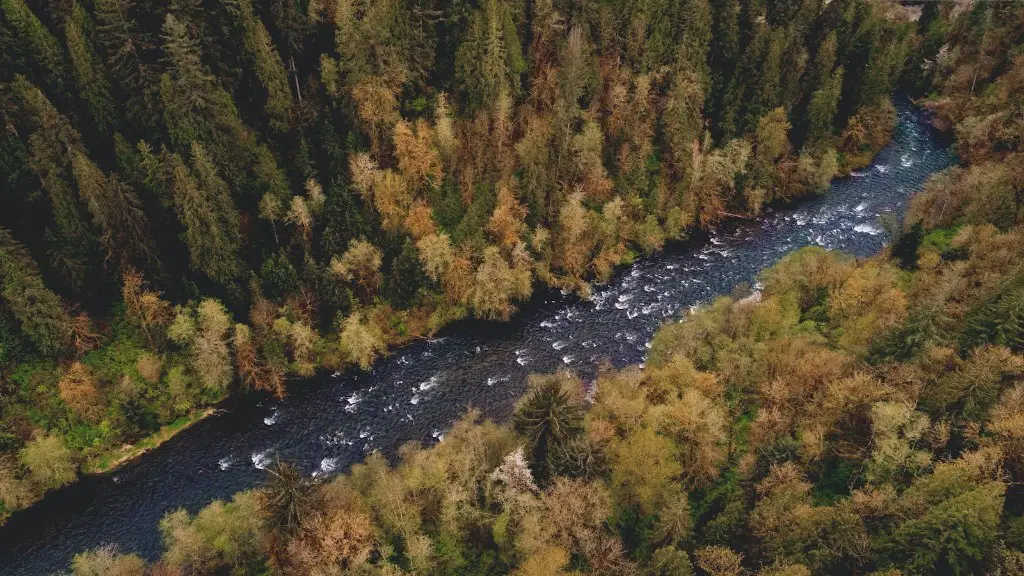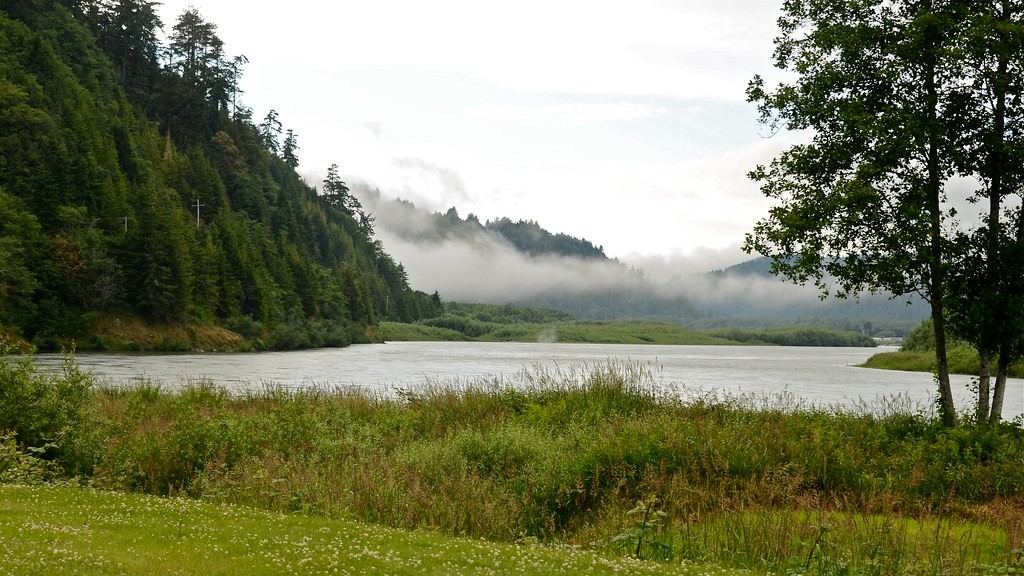Why Does The Mississippi River Appear Brown?
The mighty Mississippi River has carved paths through land and connected people and cultures over centuries. But why is it brown? It’s not the normal blue or green that people expect of their waterways. While it’s easy to assume a murky color is caused by pollution, there is actually an entirely different explanation.
The Mississippi River carries a high amount of dissolved materials and sediment. This makes the water a different color, like a brownish-yellow-green. It is estimated that a staggering 700 million tons of sediment are carried each year as this river makes its way through valleys and tributaries, draining a large part of the United States.
Why Is Sediment Different from Pollution?
Sediment is typically caused by erosion, uneven terrain, and carried by rivers. This natural process is not considered a pollutant, as most of the sediment is made up of sand, clay, and dirt. It is simply part of the natural erosion of the land. Pollution, on the other hand, is specifically caused by humans. This can come from waste and runoff from human activities, such as industrial runoff or sewage.
When sediment is carried into the Mississippi River, it is a natural occurrence. This process is further aided by its length and the terrain it passes over. It may seem like the river is eternally polluted, but it is not the case. Although sediment can impact the clarity of the water, it is usually not detrimental to the environment as it is not a harmful material.
Is It Harmful to The River?
The amount of sediment in the Mississippi River is vast, and it can harm the local environment. For one, it can make it difficult for some aquatic animals to survive in the river. This can make it difficult for life cycles to complete and small fish to live in their environment.
Sediment can also accumulate in the riverbed, which can affect the natural water flow. This can cause areas of flooding or impede the flow of fish, plants, and other aquatic life. As a result, it can be difficult for natural habitats to exist and grow in the environment.
What Does This Mean for The People Who Live Near Mississippi River?
The sediment in the Mississippi River can certainly be beneficial, providing fertilizer and soil quality that is needed in farming. But it can also be detrimental, resulting in flooding and difficulty with aquatic life. While it is not necessarily a cause for alarm, it is important to be aware of this natural occurrence and the implications it could have on the environment.
For those living near the Mississippi River and its tributaries, it is important to be aware of the effects of sediment on the water. This includes pollution from nearby activities, access to clean water, and the need to protect vulnerable eco-systems like wetlands, which also play a role in supporting life in the river.
The Impact of Human Activity
Humans have been altering the landscape of the Mississippi River for centuries. The amount of sediment in the river has been drastically changed due to activities such as mining, land reclamation, damming, fertilizing, and draining. The accumulation of sediment in the river can accelerate due to the lack of protective vegetation around it.
The Mississippi River is also affected by the increasing climate change. Since the 1970s, the levels of precipitation and temperature in the Mississippi watershed have been increasing, resulting in higher levels of runoff and sediment. This creates an even greater need for human intervention to help maintain the balance in the river.
Sediment Monitoring Programs
To reduce the amount of sediment entering the Mississippi River, the US Army Corps of Engineers has developed several sediment monitoring programs. These programs measure the levels of sediment in the river and make recommendations for areas that may need better conservation management, such as sediment controls or improved agricultural practices.
Scientists and environmentalists also recommend methods such as creating sediment traps, preserving vegetation along the banks of the river, and increasing the area of wetlands. These are some of the most effective ways of reducing the amount of sediment entering the river.
The Significance of The Mississippi River
The Mississippi River is not only a vital waterway but it is also a source of crucial nutrients and other sediment to the environment. Sediment is important to the environment and should not be taken lightly. It is our responsibility to protect and maintain the river’s delicate ecosystem and ensure the river remains a healthy and vibrant resource for generations to come.
Effects of Sediment Being Carried by The Mississippi River
While sediment from the Mississippi River can be beneficial, it also has some negative implications. Sediment can cause damage to the natural environment. This includes the disruption of aquatic life, difficulties with controlling water levels, flooding, and decreased water quality.
The sediment particles can also create an oxygen gap for aquatic life in the river, meaning that the water won’t be able to hold enough oxygen for the fish and other organisms living there. And sediment can accumulate in the same places where aquatic animals lay their eggs, making it impossible for them to hatch and survive.
Managing The Sediment In The Mississippi River
The US Army Corps of Engineers and other scientists have developed various methods to help control the amount of sediment entering the river. These include the construction of check dams to help reduce erosion and sedimentation, increased vegetation along the banks of the river to reduce runoff, and the construction of sediment traps.
In addition, organizations and groups are working to reduce industrial and agricultural runoff, as well as increase water efficiency. These efforts are aimed at improving the overall water quality of the Mississippi River and helping to protect aquatic life living in the river.
The Future of The Mississippi River
Caring for the Mississippi River requires understanding its unique environment and the impact that sediment influxes have on it. The importance of the Mississippi River to both humans and wildlife cannot be overstated. It is our responsibility to ensure that the long-term survival of the Mississippi River remains secure, with sediment and pollution levels managed to their optimal thresholds.
Fortunately, organizations such as the US Army Corps of Engineers and other environmental advocates are working hard to ensure the safety and protection of the Mississippi River, as well as its many tributaries. With continued care, the future of this great river will remain strong and healthy for generations to come.




